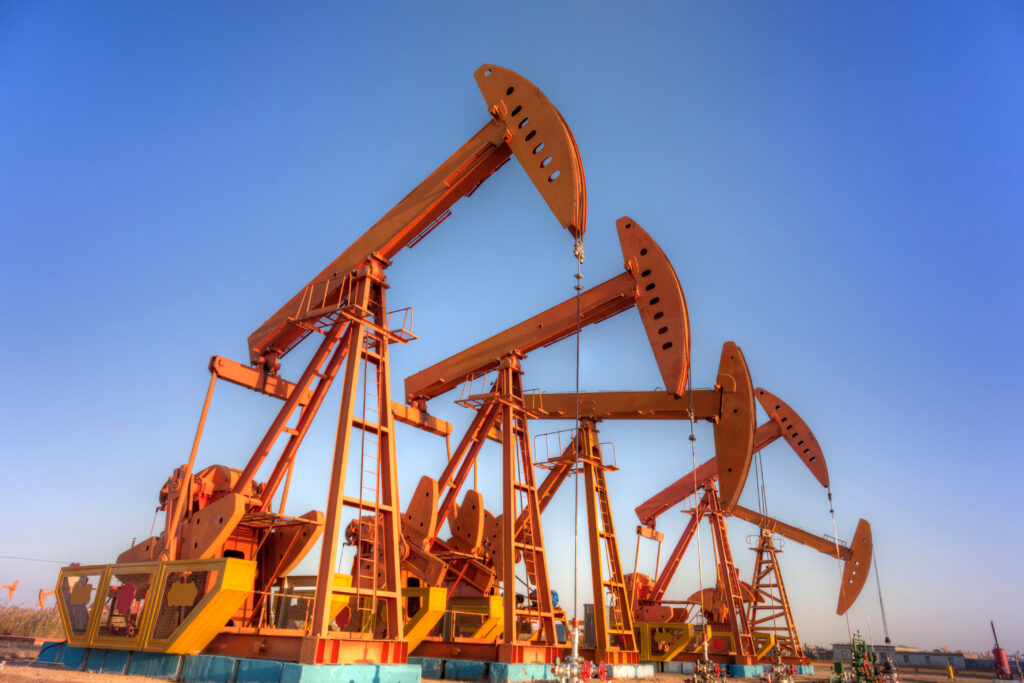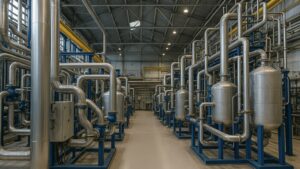Carbon capture technology holds great promise as a tool. It reduces greenhouse gas emissions from hard-to-decarbonize industries. These include oil and gas, cement, and steel production. However, the high costs of capturing, transporting, and storing CO2 have hindered the wide-scale adoption of carbon capture, utilization, and storage (CCUS). For CCUS to play a meaningful role in achieving global climate goals, transformative innovation is needed to dramatically lower costs.
The Need for Carbon Capture
CCUS offers a critical pathway for limiting global temperature rise to well below 2°C above pre-industrial levels, as targeted by the Paris Agreement. In the IEA Sustainable Development Scenario, in which global CO2 emissions from the energy sector fall to zero on a net basis by 2070, CCUS accounts for nearly 15% of the cumulative reduction in emissions compared with the Stated Policies Scenario.

The contribution of CCUS grows over time as the technology improves, costs fall and cheaper abatement options in some sectors are exhausted. However, CCUS deployment remains far below the levels needed due to prohibitively high costs.
Talking about how much does a carbon cost plant cost to build? the capital costs to build a carbon capture facility typically range from $100 million to over $1 billion. This is with total costs estimated at $50-100+ per ton of CO2 abated. This includes capital, operating, and transportation/storage costs.
Key Challenges Facing Carbon Capture
Carbon capture involves separating CO2 from industrial flue gases or directly from the atmosphere, transporting it via pipeline or ship, and depositing it in secure geological storage sites. Currently, the three main challenges facing the cost of carbon capture are:
High Capital Costs
Building carbon capture facilities requires major upfront capital investment. It comes with costs ranging from $500–1000 per ton of CO2 capture capacity. Moreover, the absorption technology predominantly used for CO2 separation also consumes a significant amount of energy. As a result, it further drives up costs.
Lack of Infrastructure
There is limited infrastructure for transporting and storing captured CO2. So, building out pipelines, ships, and geological storage sites will require major public/private investment. Additionally, most storage sites are not conveniently located near major CO2 emitters.
Insufficient Incentives
Putting a meaningful price on carbon via taxes or cap-and-trade schemes could make CCUS more cost-competitive. Market incentives are insufficient to spur widespread CCUS adoption. This is at the levels needed to meet global climate goals.
Breakthroughs Needed in Capture Materials and Processes
To overcome these challenges, significant technology innovation and cost reductions are needed across the entire CCUS chain. So, here are some of the most promising areas for innovation in CO2 capture specifically:
Advanced Sorbent Materials
Current solvent-based capture systems are energy-intensive. Research into new classes of sorbent materials. It includes metal-organic frameworks that could reduce energy penalties and lower capture costs. Moreover, for direct air capture, new high surface area adsorbent materials are key.
Novel Capture Processes
Processes like chemical looping, membranes, and hydrate-based separation may be less energy-intensive. This is when compared to traditional amine scrubbing. Moreover, modular, standardized capture systems could also help drive down capital costs.
System Integration & Optimization
A holistic, system-level approach to optimizing CO2 capture processes can reveal inefficiencies. It can also reveal opportunities for cost reductions. This is through heat integration, process intensification, and waste heat recovery.
Game-Changing Industrial Innovations
For hard-to-decarbonize sectors, new low or zero-carbon production processes could minimize CO2 emissions from the start. As a result, it can reduce reliance on end-of-pipe capture. So, these disruptive process innovations will be essential for net zero.
Critical Advances in CO2 Transport and Storage
Innovation is also vital in the transport and storage components of CCUS to help with the cost of carbon capture:
CO2 Pipeline Network Optimization
Strategic pipeline network design and capacity modeling can enable economies of scale in CO2 transport. Materials research is also needed to prevent hydrogen embrittlement in CO2 pipelines.
Advanced Geological Storage Solutions
Optimizing injection strategies in saline aquifers and improved monitoring tools. This is to provide assurance against leakage risks and can support large-scale storage. As a result, understanding reservoir dynamics is crucial.
CO2 Mineralization Pathways
Converting CO2 into stable mineral forms provides permanent storage. However, the kinetics and energy costs of mineralization reactions need improvement.
CO2 Utilization Options
Converting CO2 into fuels, chemicals or building materials could offset capture costs while creating environmental benefits. However, the market size for CO2 utilization is currently limited.
The Role of Policy and Industry Collaboration
Deploying carbon capture technology at the gigatonne scale required will depend not just on technical innovation. It will also depend on supportive government policies and industry collaboration. So, policy incentives like tax credits, contracts-for-difference, guaranteed offtake agreements, and public co-funding of demonstration projects can help catalyze private investment in CCUS.
Furthermore, clear regulatory frameworks allocating liability, ensuring responsible storage practices, and streamlining permitting will also accelerate deployment. So, implementing robust carbon pricing policies that reflect the true societal cost of emissions would significantly improve the business case for CCUS adoption. Industry partnerships on shared transport infrastructure and industrial clusters can drive economies of scale.
Knowledge-sharing networks, common standards and best practices, public databases on storage capacities, and rules for verifying CO2 storage are crucial to build trust and confidence. Moreover, workforce training and redevelopment support should also be part of policy packages to enable a just transition
Making Carbon Capture Economical: Ways to do it
Bringing down the costs of CCUS will require a multipronged approach:
• Public funding for research, development, and demonstration of innovative capture technologies. It also includes transport solutions and storage techniques. So, governments have a crucial role in de-risking investment.
• Stronger carbon pricing policies that reflect the true social cost of emissions and make CCUS more cost-competitive. Moreover, other financial incentives like tax credits and contracts-for-difference can also help.
• Private sector investment in commercializing and scaling up new CCUS solutions. This is through venture capital, project finance, and corporate partnerships.
• Cross-industry consortiums to coordinate regional CO2 infrastructure development. This is also to create industrial clusters and benefit from economies of scale.
• Systematic efforts to collect data, share knowledge, and develop standards and best practices for CCUS implementation.
• Skills training, educational programs, and workforce development. This is to build CCUS expertise and also enable wide-scale deployment.
The road ahead
Making carbon capture and storage affordable on a large scale is a big challenge. It needs people from different areas. This includes government decision-makers, researchers, and businesses, working together worldwide. So, it means we have to come up with new and better ways to capture and store carbon dioxide in a cost-effective manner. Some of these methods will be small improvements, while others might be completely new and groundbreaking.
Even though there are challenges, the urgent need to tackle climate change shows we must work hard to find innovative solutions for carbon capture. By working together and finding new ways to capture carbon, we can make it a practical and economical choice. This is important for reducing carbon emissions in our economy and moving towards a future where we don’t add more carbon to the environment than we take away. To do so, summits are also proving to be quite effective.
The global summit on net zero energy production is a prime opportunity for the oil and gas industry. It displays over 100 industry leaders along with over 20 hard-hitting sessions. These sessions will range on topics like decarbonization of downstream facilities, carbon capture usage and storage technology, designing of new Oil/Gas facility, low carbon hydrogen production, reducing energy intensity & GHG emissions, and more! The event in Amsterdam, Netherlands on 30-31st January 2024 also provides over 7 networking sessions to be effective at approach. So, make sure you do not miss the opportunity!





